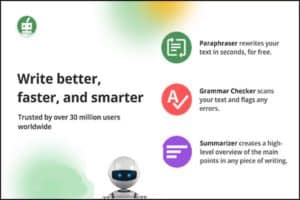Table of Contents
ToggleMastering the Art of Digital Marketing Campaign Planning
To achieve remarkable success with your digital marketing campaigns, it is crucial to engage in meticulous and strategic planning that aligns perfectly with your overarching business goals, comprehends the intricacies of your target audience, and effectively utilises the available resources. A thorough planning process forms the bedrock of your campaign’s success, ensuring that every effort, whether time or financial investment, yields optimal returns. This comprehensive planning journey involves three fundamental steps: establishing precise objectives, judiciously allocating your budget, and crafting a realistic timeline to ensure your campaign remains on a steady course.
Establishing Clear, Attainable Objectives for Your Campaign

What specific outcomes do you aspire to achieve with your digital campaign? Clearly articulated objectives serve as a navigational compass for your campaign, shaping strategic direction and establishing key performance benchmarks. Your goals should conform to the SMART criteria: Specific, Measurable, Achievable, Relevant, and Time-bound. For instance, a retail brand might set a target to increase its online sales by 20% within three months. This clarity fosters focused strategies and tailored messaging that deeply resonates with your audience.
Engagement from stakeholders is essential during the collaborative process of defining these objectives. By facilitating discussions and outlining mutually agreed-upon goals, you can foster a unified vision that the entire team can rally behind. Additionally, it’s vital to anticipate potential challenges that may arise while pursuing these goals. By preparing for obstacles, you enhance your ability to adapt your strategies on the fly, ensuring your digital campaign remains nimble and responsive to changing circumstances. Reviewing insights from prior campaigns can also illuminate effective tactics and potential pitfalls, refining your focus for future initiatives.
Moreover, aligning your objectives with broader business goals is essential, as this ensures your digital campaign contributes meaningfully to your organisation’s overall growth and strategic direction. Establishing a framework that connects your campaign with larger corporate initiatives allows you to create a cohesive approach that maximises the impact of your efforts.
Wise Budget Allocation for Effective Campaign Management
Determining the appropriate financial commitment for your digital campaign is critical to achieving desired outcomes while staying within your financial constraints. Start by evaluating your overall marketing budget, which should encompass both direct expenses associated with your campaign and indirect costs such as labour, tools, and necessary software. Knowing where to allocate funds is essential for enhancing your campaign’s overall efficacy.
Different components of a campaign may require varying financial investments. For example, social media advertising might necessitate a more substantial budget compared to email marketing efforts. It is crucial to carefully consider the anticipated return on investment (ROI) associated with each aspect of your campaign. Investing in data analytics tools, for example, can provide critical insights that elevate your campaign’s performance, thus justifying its costs. As you assess potential expenses, remain aware of the dynamic landscape of digital marketing, where technologies and platforms are in constant flux and evolution.
Maintaining flexibility should be a top priority as you allocate your budget. Unexpected opportunities or challenges may surface during your campaign’s rollout. By reserving a portion of your budget for unforeseen contingencies, you can swiftly adapt and seize advantageous moments as they arise, ensuring that your digital campaign remains aligned with its objectives.
Creating a Detailed Timeline for Campaign Execution
Developing a well-structured timeline is integral to effectively executing any digital campaign. It serves as a roadmap delineating key milestones and deadlines, ensuring all team members are aligned and accountable. Begin by identifying the significant phases of your campaign, extending from initial planning through to final execution and subsequent analysis.
Project management tools can significantly enhance the effectiveness of your timeline, offering visual representations of your schedule. These tools facilitate easy tracking of deadlines and task assignments, promoting transparency among team members. Regularly revisiting your timeline is essential to identify and address any delays or challenges that may jeopardise your campaign’s progress.
Moreover, consider external factors that could influence your timeline. Seasonal trends, cultural events, or shifts in industry dynamics may impact your audience’s engagement and responsiveness. By staying attuned to these factors, you can adjust your campaign schedule to optimise reach and performance, ultimately enhancing the effectiveness of your digital campaign.
In summary, the planning stage of your digital campaign is crucial for laying a robust foundation for success. By establishing clear objectives, wisely allocating your budget, and crafting a realistic timeline, you can strategically position your campaign to achieve its goals and generate impactful results.
Selecting the Most Suitable Platforms for Your Campaign

Choosing the right platforms for your digital campaign can significantly influence the outcome, determining the difference between success and failure. Each platform possesses unique features and caters to distinct audiences, making it imperative to understand where your target demographic spends their time online. This section will explore crucial considerations for selecting the most suitable platforms, which include identifying your audience, evaluating platform features, integrating multiple channels, assessing reach and engagement, and factoring in budget and resources.
Understanding and Identifying Your Target Audience
Grasping the nuances of your target audience is essential before launching a digital campaign. Conduct comprehensive research to ascertain the demographics, preferences, and online behaviours of your ideal customers. Tools like Google Analytics, social media insights, and survey data can yield invaluable information about your audience’s habits and inclinations.
Consider crafting detailed audience personas to encapsulate these insights. A persona may incorporate details such as age, gender, interests, and online behaviours, creating a tangible representation of your target demographic. Once you have identified your audience, investigate the platforms they frequent. For instance, younger demographics tend to engage more on platforms like TikTok and Instagram, whereas professionals may gravitate towards LinkedIn. Understanding these nuances enables you to determine where your messaging will most likely resonate effectively.
Additionally, consider cultural factors that may influence audience engagement across different geographical regions. Global campaigns stand to benefit from a nuanced understanding of local customs, languages, and social media usage. Tailoring your approach to suit diverse audiences ensures that your digital campaign is relevant and impactful.
Evaluating Platform Features and Capabilities for Maximum Impact
After defining your audience, the next step is to assess the features and functionalities of various platforms to ascertain their suitability for your campaign. Each social media network provides distinct tools to enhance your campaign’s effectiveness. For example, Instagram’s visual-centric approach is ideal for brands that focus heavily on aesthetics, while Twitter’s fast-paced environment is better suited for real-time engagement and customer service.
Investigate the advertising options available on each platform as well. For instance, Facebook offers highly targeted ad placements based on user interests and behaviours, facilitating precise audience targeting. Other platforms may provide unique features such as shoppable posts, video stories, or live broadcasting capabilities that can significantly enhance your engagement levels.
Furthermore, consider the analytics and reporting tools available on each platform. Robust analytics enable you to track performance metrics, allowing real-time strategy adjustments to achieve optimal results. The right platform can be a powerful ally in fulfilling your campaign objectives.
Integrating Multiple Channels for Enhanced Brand Impact

In today’s interconnected digital landscape, relying solely on one platform is rarely sufficient for a successful digital campaign. Integrating multiple channels can greatly enhance your campaign’s reach and reinforce your messaging across diverse platforms. This omnichannel approach allows you to create a cohesive experience for your audience, thereby increasing brand recognition and engagement.
Consider how each platform can complement the others. For instance, you might use Instagram to create engaging visuals that drive traffic to a blog on your website, which provides more in-depth information. Similarly, email marketing can effectively retarget your audience after engaging social media content, ultimately driving conversions and maintaining interest.
Moreover, ensure consistency in your brand messaging across all platforms. This harmony reinforces your campaign’s objectives while creating a unified brand identity that resonates with your audience.
Assessing Platform Reach and Engagement Potential for Optimal Results
When evaluating platforms, prioritise their potential reach and engagement levels. Different platforms cater to varying audience sizes and engagement styles. For example, while TikTok boasts a rapidly growing user base, the depth of engagement may differ from established platforms like Facebook, which has cultivated a robust community feel over the years.
Utilise analytics tools to evaluate not only the number of users on each platform but also the levels of engagement. High follower counts can be enticing, but if the audience isn’t actively engaging with content, that platform may not be the right fit. Focus on metrics such as likes, shares, comments, and time spent on posts to assess how well your audience interacts with the content.
Additionally, consider the algorithmic nature of platforms. Understanding how content is distributed can have a direct impact on your visibility. For instance, Instagram’s algorithm prioritises posts from users that users have previously engaged with, making it crucial to cultivate active interactions to maintain visibility in feeds.
Factoring in Budget and Resource Availability for Effective Planning
As you evaluate potential platforms, it is vital to conduct a thorough analysis of costs and resources. Each platform has its advertising pricing structure, and expenses can vary considerably. Facebook and Google Ads, for example, operate on a bidding system that can escalate costs based on competition for keywords or audience segments.
Beyond direct advertising costs, consider the resources necessary to manage each platform effectively. Some platforms demand more frequent posting and interaction than others, potentially requiring dedicated personnel or tools for content scheduling and analytical monitoring. Therefore, assess whether your team possesses the bandwidth and skills to maintain a robust platform presence.
Lastly, ensure that your selected platforms align with your overall budgetary constraints. Keep an eye on expenditures while maximising effectiveness to ensure that your digital campaign remains financially viable and productive.
In conclusion, selecting the right platforms is a pivotal step in your digital campaign. By understanding your audience, evaluating platform features, integrating channels, assessing reach and engagement, and considering budget and resources, you lay the groundwork for a successful campaign that drives meaningful results.
Crafting Engaging and Compelling Content for Maximum Impact
The essence of any successful digital campaign resides in the creation of content that resonates deeply with your audience. Compelling content not only captures attention and fosters connections but ultimately guides your audience toward specific actions. In this section, we will delve into the intricacies of crafting a powerful message, effectively leveraging visuals, and tailoring content for different platforms to ensure your campaign stands out amid the crowded digital landscape.
Creating a Clear and Impactful Message
Establishing a clear and engaging message is paramount to the success of your digital campaign. Your message should encapsulate your brand’s unique value proposition while addressing the needs and desires of your audience. Begin by pinpointing the core message you wish to convey, ensuring it aligns closely with the objectives established during your planning phase for coherence throughout your campaign.
Once you have established a clear direction, consider the tone and language that will resonate best with your audience. A younger demographic may respond positively to casual, relatable language, while a professional audience may prefer a more formal and polished approach. Crafting a message that speaks directly to your audience enhances engagement and motivates them to take action.
Additionally, storytelling can serve as a powerful device within your messaging framework. Sharing authentic narratives that highlight your brand’s journey, values, or customer experiences can evoke emotional responses and foster deeper connections with your audience. Incorporating testimonials or case studies can further amplify your credibility, increasing trust and engagement within your digital campaign.
Effectively Integrating Visuals to Enhance Your Message
Integrating high-quality visuals into your content is an indispensable aspect of contemporary digital campaigns. The human brain processes images significantly faster than text, making visuals a potent means of capturing attention. Whether through striking graphics, infographics, videos, or photographs, visuals not only enhance your message but also contribute to a compelling narrative.
Consider the emotional resonance of your visuals. Images that evoke specific emotions can significantly influence audience perceptions, leading to heightened engagement. For instance, vibrant colours may convey excitement and positivity, while softer tones evoke calmness and trust. Ensure that your visual elements align with your brand identity and campaign objectives, creating a cohesive message that resonates across various platforms.
Moreover, harness the power of video content. Videos often achieve higher engagement rates compared to static images or text-based posts. Platforms such as TikTok and Instagram Stories prioritise video content, making it essential for brands seeking to engage younger audiences. Utilising videos to share products, brand stories, or provide valuable insights further enhances the effectiveness of your content.
Customising Content for Each Platform’s Unique Characteristics
Every platform boasts unique characteristics and best practices, making it essential to adapt your content accordingly. A one-size-fits-all approach is unlikely to yield the desired results in your digital campaign. For instance, Instagram thrives on visual appeal, while Twitter’s character limit necessitates brevity and clarity in messaging.
To ensure your content is truly compelling, consider the audience expectations and engagement styles specific to each platform. LinkedIn audiences typically expect professional and informative content, while platforms like Snapchat cater to more playful and casual interactions. Tailoring your content to meet the specific requirements of each platform increases the likelihood of engagement and conversion.
Furthermore, experiment with various content formats to determine what resonates best with your audience across multiple platforms. A post that performs exceptionally well on Facebook may not necessarily translate to success on Instagram—regularly analysing performance allows you to refine your content strategy, ensuring that your digital campaign continues to evolve and improve.
In summary, crafting engaging and compelling content is integral to the success of your digital campaign. By developing a strong message, effectively utilising visuals, and customising your approach for each platform, you can create a captivating narrative that resonates with your audience and drives meaningful results.
Precision Execution of Your Campaign for Optimal Results
The execution phase of your digital campaign marks the culmination of all your detailed planning and strategic efforts. This crucial stage encompasses the rollout of your campaign according to the established plan, continuous performance monitoring, audience engagement, and making necessary adjustments to optimise your campaign effectively.
Executing your digital campaign is a multifaceted process that necessitates careful coordination. Before going live, ensure that all elements of your campaign—from content creation to platform setup—are in place. Conduct thorough checks to confirm that all links, graphics, and messaging align with your campaign goals. Any discrepancies at this stage can hinder performance and damage your brand’s reputation.
Consider employing a phased rollout for larger campaigns. This approach involves launching your campaign in stages, allowing you to monitor initial responses before fully committing resources. A phased strategy can provide valuable insights into audience reactions, enabling you to fine-tune elements of your campaign for maximum effectiveness.
Leverage scheduling tools to streamline your launch process. These tools can automate posting times, ensuring your content is released when your audience is most active. A well-timed launch can significantly enhance visibility and engagement, setting the stage for a successful digital campaign.
Continuous Monitoring of Performance Metrics
Once your digital campaign is live, ongoing monitoring becomes essential. Utilise analytics tools to track key performance indicators (KPIs) such as reach, engagement, conversions, and click-through rates. By regularly assessing these metrics, you gain insights into which aspects of your campaign are performing well and which may require adjustment.
Pay attention to audience feedback as well. Engagement metrics, including comments and shares, can provide indirect feedback regarding how your content is being received. Are audiences interacting positively with your messaging? Is their engagement level high or low? These insights can help you pivot your approach swiftly, ensuring your campaign remains relevant and impactful.
Additionally, A/B testing can be an invaluable method during this phase, allowing you to compare the performance of different content variations. Test different headlines, visuals, or calls to action to identify which elements resonate most with your audience, refining your campaign in real-time.
Actively Engaging with Your Audience for Stronger Connections
Interaction is at the core of a successful digital campaign. Engaging with your audience builds relationships, loyalty, and trust. Make it a priority to respond promptly to comments, messages, and mentions. This two-way communication demonstrates that you value their input and are invested in their experience with your brand.
To encourage participation, consider hosting live Q&A sessions, webinars, or interactive polls. These real-time engagements can energise your audience and foster deeper connections and a sense of community around your brand. Additionally, user-generated content can serve as a powerful form of engagement. Encourage your audience to share their experiences with your products or services, amplifying your campaign’s reach and authenticity.
Furthermore, actively seek feedback through surveys or polls to gauge audience sentiment. Understanding how your audience perceives your brand can yield critical insights that inform future campaigns and help you better meet their needs.
Evaluating and Adjusting Your Strategies for Continuous Improvement
The implementation phase of your digital campaign is not linear; ongoing evaluation and adjustment are key to achieving your campaign objectives. Regularly assess performance metrics against your initial goals. Are you on track to meet your objectives? If not, identify the factors contributing to shortcomings and adjust your strategies accordingly.
Maintaining flexibility is crucial in today’s rapidly evolving digital landscape. Trends and audience behaviours can shift swiftly, necessitating a proactive approach to strategy refinement. Consider conducting regular team meetings to discuss insights from performance data and audience feedback. Collaboratively brainstorm potential adjustments and enhancements to your campaign.
Additionally, maintain open communication lines with stakeholders. Sharing insights and results can cultivate a collaborative environment where all team members are invested in the campaign’s success. Ensuring everyone understands the rationale behind adjustments can enhance buy-in and commitment to the campaign’s objectives.
In conclusion, effectively implementing your digital campaign involves launching with precision, monitoring performance, engaging with your audience, and continuously adjusting strategies. By focusing on these crucial elements, you can navigate the complexities of digital marketing and achieve substantial results.
Collecting Relevant Data for Informed Decision-Making
Data collection serves as the cornerstone of effective campaign analysis. Begin by identifying the key metrics that align with your campaign objectives. Common metrics include reach, engagement, conversion rates, and return on investment (ROI). Utilising analytics tools can streamline this process, providing comprehensive insights into your campaign’s performance across various platforms.
Regularly scheduled check-ins throughout the campaign can help gather data in real time, allowing for timely adjustments and optimisations. Once optimisation concludes, compile all relevant data to create a comprehensive overview of the campaign’s performance.
Consider segmenting your data to identify trends among different demographics or audience segments. This granular analysis can reveal valuable insights about how various groups interacted with your campaign, informing your strategies for future campaigns.
Interpreting Your Metrics to Derive Actionable Insights
Data is only as valuable as the insights derived from it. After collecting relevant metrics, the next step is interpreting them to understand the impact of your digital campaign. Look for patterns, anomalies, and correlations that may indicate your campaign’s strengths and weaknesses.
For example, if engagement rates were particularly high on a specific platform or post type, delve deeper to comprehend what factors contributed to that success. Conversely, if certain content underperformed, analyse potential reasons behind its lack of engagement. Did it resonate with the audience? Was the timing inappropriate? Understanding these factors can yield critical insights for future campaigns.
Additionally, do not overlook qualitative feedback from your audience. Comments and reviews can provide context that numbers alone may not reveal, enriching your understanding of audience sentiment and preferences.
Reporting Findings to Stakeholders for Transparency and Improvement
Once you have interpreted your data, compiling your findings into a clear and actionable report is essential. This report should spotlight key insights while including recommendations for future campaigns. Present your data visually, utilising graphs and charts to enhance comprehension and engagement.
Ensure your report addresses stakeholders’ interests, focusing on key performance indicators (KPIs) relevant to their concerns. Share successes, lessons learned, and actionable recommendations to guide future marketing efforts. This transparency fosters trust among stakeholders and demonstrates your commitment to continuous improvement.
In addition to sharing insights internally, consider leveraging findings to inform your broader audience. Sharing success stories or key insights can enhance brand authenticity and build trust with your consumer base.
In summary, analysing campaign performance is a vital step in understanding the effectiveness of your digital campaign. By collecting and interpreting metrics and reporting findings, you will equip yourself with the knowledge necessary to inform and elevate future marketing efforts.
Identifying Key Learnings from Your Campaign for Future Success
Reflecting on the lessons learned from your digital campaign is essential for growth. Start by reviewing performance data and audience feedback to identify what strategies worked well and what did not. Note messaging, content types, and tactics that resonated with your audience.
Consider hosting a debrief session with your team to discuss insights in a collaborative environment. This discussion can be invaluable for uncovering different perspectives and interpretations of the data. Encourage open dialogue about the challenges faced during the campaign and brainstorm solutions to address similar issues in the future.
Moreover, document these learnings in a central repository for easy access during future campaigns. This knowledge base will be a valuable resource for your team, enabling them to avoid past mistakes and apply successful strategies to upcoming projects.
Refining Your Marketing Strategy for Continuous Improvement
Based on the insights gathered from your campaign analysis, consider refining your marketing strategy for future digital campaigns. If specific platforms or content types yielded particularly strong results, allocate more resources to those areas. Conversely, if some strategies underperformed, reassess whether to continue or modify them in future initiatives.
Develop a list of actionable recommendations derived from your analysis. For example, if audience engagement was lower than expected, consider adjusting your messaging or incorporating additional visuals to enhance appeal. Tailoring your strategy based on previous experiences ensures that each new campaign builds upon the successes and lessons of the last.
Additionally, maintain an agile approach. The digital landscape is constantly changing, and remaining flexible allows you to adapt your strategies in response to emerging trends or shifts in audience behaviour.
Staying Informed on Digital Marketing Trends for Competitive Edge
In the fast-paced realm of digital marketing, staying abreast of the latest trends and developments is essential for sustained success. Regularly consuming industry news through blogs, webinars, and podcasts can help you remain informed about emerging technologies, platform changes, and evolving audience preferences.
Engaging with thought leaders and industry experts can also provide valuable insights. Attend conferences and workshops to network with peers and gain fresh perspectives on digital marketing strategies. By remaining proactive in your learning, you can identify new opportunities to leverage in your digital campaigns.
Moreover, consider joining online communities or forums focused on digital marketing. These spaces often serve as platforms for sharing best practices, learning from others’ experiences, and exchanging fresh ideas to implement in your future campaigns.
Investing in Continuous Learning for Your Team’s Development
Committing to ongoing education and training is paramount for staying ahead in the ever-evolving digital marketing landscape. Encourage your team to participate in professional development opportunities, such as certifications or online courses. Investing in your team’s knowledge ensures they are equipped with the skills and strategies needed for effective digital campaigns.
In addition to formal training, foster a learning culture within your organisation. Encourage team members to share insights from articles, webinars, or conferences they attend. This collaborative approach can lead to innovative ideas and strategies that enhance future campaigns.
Ultimately, investing in continuous learning will benefit not only your current projects but also your brand for long-term success in the competitive digital marketing landscape.
In conclusion, optimising is an iterative process requiring reflection, strategy refinement, trend awareness, and a commitment to learning. By embracing these principles, you can ensure that your digital campaigns remain effective and impactful.
Utilising Technology to Elevate Your Campaign Performance
Successful execution of a digital campaign heavily relies on leveraging technology. With the rapid advancements in digital marketing tools and platforms, embracing technology can streamline processes, enhance targeting, and improve overall campaign performance. This section explores how automation tools, AI and machine learning, data analytics, and cloud computing can significantly elevate your marketing efforts.
Harnessing Automation for Streamlined Efficiency
Automation tools are invaluable assets in managing the complexities of your digital campaign. These tools can streamline various aspects of your campaign, from content scheduling to customer engagement. For instance, social media scheduling platforms enable you to plan and schedule posts well in advance, ensuring a consistent online presence without daily manual effort.
Email marketing automation can also enhance your campaign’s performance. Segmenting your audience and dispatching personalised messages can increase engagement and conversion rates. Automated workflows can nurture leads through the sales funnel, delivering timely and relevant content that resonates with your audience.
Furthermore, automation tools can assist you in monitoring campaign performance in real time. By receiving instant notifications about engagement metrics or audience interactions, you can respond promptly to emerging trends or issues. This proactive approach ensures that your digital campaign remains agile and responsive.
Exploring AI and Machine Learning for Enhanced Precision in Targeting
Integrating AI and machine learning into your digital campaign can significantly enhance targeting and personalisation capabilities. Personalisation technologies allow you to analyse vast amounts of data and identify patterns in audience behaviour, enabling more precise audience segmentation.
For instance, AI-driven algorithms can predict user preferences based on past interactions, allowing you to tailor your messaging accordingly. This level of personalisation can forge deeper connections with your audience and increase the likelihood of conversion.
Additionally, AI can optimise ad placement by analysing performance in real time. This capability allows you to allocate resources more effectively, ensuring that your campaign reaches the right audience at the right time for maximum impact.
Implementing Data Analytics for Informed Decision-Making
Data analytics play a crucial role in understanding the effectiveness of your digital campaign. By leveraging analytics tools, you can gain insights into audience engagement, conversion rates, and ROI, enabling you to make data-driven decisions that enhance your strategies.
Utilising predictive analytics can further enhance your campaign by forecasting future trends based on historical data. This foresight allows you to adjust your strategies proactively, maximising your campaign’s potential. For example, understanding seasonal trends in consumer behaviour can inform your campaign timing and messaging, ensuring relevance and resonance.
Moreover, implementing A/B testing can be a powerful tool for refining your approach. Testing different variables, such as headlines, visuals, or calls to action, allows you to assess what resonates best with your audience, leading to improved campaign performance.
Adopting Cloud Computing for Scalability and Efficiency
Cloud computing offers scalability, flexibility, and cost-efficiency for managing your campaign technology needs. By leveraging cloud-based tools and platforms, you can streamline collaboration among team members, regardless of their physical locations. This is particularly advantageous for global teams working on large-scale digital campaigns.
Additionally, cloud computing facilitates easy data storage and retrieval. Centralising your campaign data in the cloud ensures all team members can access the most up-to-date information, enabling informed decision-making.
Another advantage of cloud computing is its scalability. As your digital campaign expands, cloud-based solutions can effortlessly accommodate increased demands without necessitating significant upfront investments in infrastructure. This flexibility allows you to focus on your marketing strategy rather than technical challenges.
In conclusion, leveraging technology is essential for optimising your digital strategy. By implementing automation, AI and machine learning, data analytics, and cloud computing, you can enhance your campaign’s performance and drive impactful results.
Frequently Asked Questions (FAQs)
What defines a digital campaign?
A digital campaign refers to a marketing effort that employs online platforms and channels to promote a product, service, or brand, aiming to engage and convert target audiences.
How can I evaluate the success of a digital campaign?
Success can be gauged through key performance indicators (KPIs) such as reach, engagement, conversion rates, and return on investment (ROI), which provide insights into the campaign’s overall effectiveness.
Which platforms are best suited for a digital campaign?
The optimal platforms depend on your target audience and campaign objectives. Common options include social media platforms like Facebook, Instagram, LinkedIn, and Twitter, as well as email marketing and search engine advertising.
How frequently should I assess my digital campaign?
Regular evaluation is crucial; ideally, you should monitor performance metrics weekly or bi-weekly to identify trends, adjust strategies, and optimise your campaign.
What types of content are most effective in digital campaigns?
Compelling visuals, engaging videos, informative blog posts, and authentic storytelling resonate well in digital campaigns, driving higher engagement and conversions.
Is it feasible to automate my digital campaign processes?
Yes, automation tools for scheduling posts, managing emails, and tracking analytics can streamline processes, saving time and enhancing efficiency in your digital campaign.
How do I identify my target audience for a digital campaign?
Research demographics, preferences, and behaviours using tools like Google Analytics and social media insights to create detailed audience personas.
What role does data analytics play in digital campaigns?
Data analytics provide insights into audience engagement and campaign performance, enabling data-driven decisions that can optimise future campaigns. Can I enhance engagement in my digital campaign?
Foster two-way communication with your audience, create interactive content, and leverage user-generated content to elevate engagement.
What should I do after my digital campaign concludes?
Analyse results by collecting data, interpreting metrics, and reporting findings to stakeholders. Use the insights gained to optimise future campaigns and achieve improved success.
Connect with us on Facebook!
The post Digital Campaign: Strategies for Success appeared first on Ezi Gold.
















